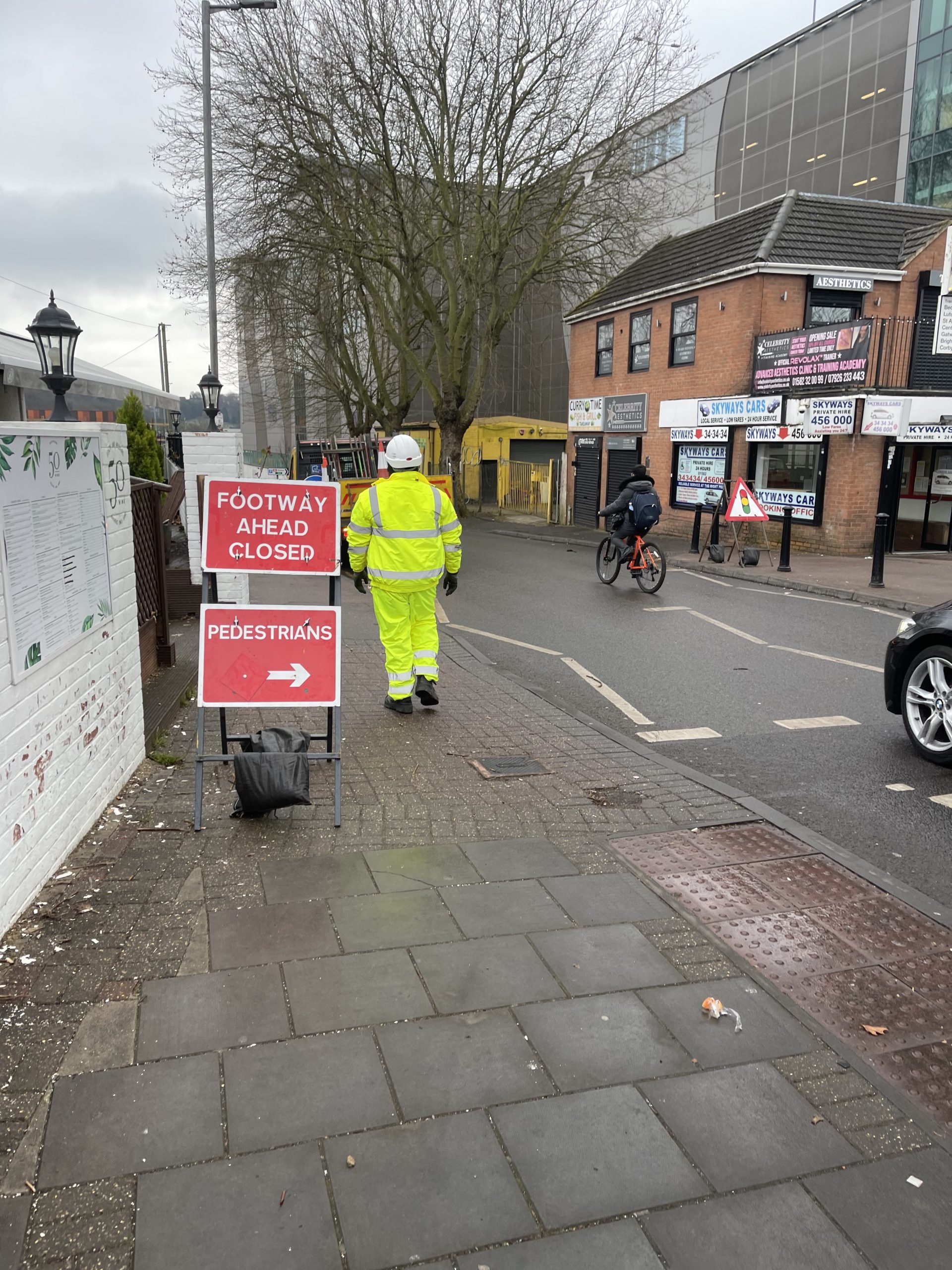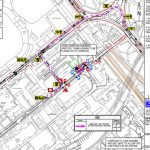The Art of Effective Pedestrian Management: Strategies for Ensuring Safety and Flow
The Art of Effective Pedestrian Management: Strategies for Ensuring Safety and Flow
Navigating through crowded areas can be a daunting task, both for pedestrians and those in charge of managing their flow. Effective pedestrian management is essential for ensuring safety and maintaining a smooth and organised flow of foot traffic. In this article, we will explore innovative strategies and best practices for managing pedestrian movement effectively.
Safety should always be the top priority when it comes to pedestrian management. By implementing clear signage, designated walkways, and proper crowd control measures, the risks of accidents and congestion can be minimised. Additionally, understanding human behaviour and anticipating pedestrian flow patterns can help optimise the movement of people in busy areas.
One of the key elements of effective pedestrian management is the use of technology. From smart pedestrian signals to real-time data analysis, embracing technological solutions can significantly improve safety and flow. By seamlessly integrating technology into infrastructure, cities and organisations can create a more efficient pedestrian management system.
Whether you're a city planner, event organiser, or business owner, mastering the art of effective pedestrian management is crucial. By implementing the strategies outlined in this article, you can ensure the safety and satisfaction of pedestrians, enhancing their overall experience. Let's delve into the world of pedestrian management and discover the keys to success.
Importance of effective pedestrian management
Navigating through crowded areas can be a daunting task, both for pedestrians and those in charge of managing their flow. Effective pedestrian management is essential for ensuring safety and maintaining a smooth and organised flow of foot traffic. In this article, we will explore innovative strategies and best practices for managing pedestrian movement effectively.
Safety should always be the top priority when it comes to pedestrian management. By implementing clear signage, designated walkways, and proper crowd control measures, the risks of accidents and congestion can be minimised. Additionally, understanding human behaviour and anticipating pedestrian flow patterns can help optimise the movement of people in busy areas.
One of the key elements of effective pedestrian management is the use of technology. From smart pedestrian signals to real-time data analysis, embracing technological solutions can significantly improve safety and flow. By seamlessly integrating technology into infrastructure, cities and organisations can create a more efficient pedestrian management system.
Whether you're a city planner, event organiser, or business owner, mastering the art of effective pedestrian management is crucial. By implementing the strategies outlined in this article, you can ensure the safety and satisfaction of pedestrians, enhancing their overall experience. Let's delve into the world of pedestrian management and discover the keys to success.
Understanding pedestrian behaviour
Proper pedestrian management is crucial for ensuring the safety and well-being of both pedestrians and the surrounding community. Without effective management, crowded areas can become chaotic and pose significant risks. By implementing strategies such as clear signage, designated walkways, and crowd control measures, the flow of foot traffic can be optimised, reducing the likelihood of accidents and congestion.
Understanding the behaviour of pedestrians is a fundamental aspect of effective management. Human behaviour is influenced by various factors such as cultural norms, personal preferences, and environmental cues. By studying and anticipating pedestrian flow patterns, city planners and event organisers can design spaces that accommodate the needs of pedestrians, ensuring a smooth and efficient movement of people.
Common Challenges in Pedestrian Management
Pedestrian management comes with its own set of challenges. One of the most common challenges is the lack of awareness among pedestrians regarding safety practices. Many individuals may not be familiar with the appropriate use of crossings, the importance of obeying traffic signals, or the dangers of distracted walking. Educating pedestrians on these safety practices is essential for reducing accidents and improving overall pedestrian management.
Another challenge is the coordination between local authorities and stakeholders. Effective pedestrian management requires collaboration among various entities, including city officials, transportation departments, event organisers, and business owners. By working together, these stakeholders can develop comprehensive strategies that prioritise the safety and convenience of pedestrians.
Strategies for Improving Pedestrian Safety
Improving pedestrian safety is a vital aspect of effective management. Several strategies can be implemented to enhance safety in crowded areas. One such strategy is the design of pedestrian-friendly spaces. Creating wide sidewalks, installing well-placed crossings, and incorporating green spaces can significantly improve the safety and comfort of pedestrians.
Implementing traffic calming measures is another effective strategy. Speed bumps, raised crossings, and roundabouts are examples of traffic calming measures that can reduce vehicle speeds and create a safer environment for pedestrians. By slowing down traffic, the risk of accidents and injuries can be minimised.
Enhancing crossing and intersection safety is also crucial. Installing pedestrian countdown timers, audible signals, and high-visibility crossing markings can improve the visibility and awareness of pedestrians and drivers alike. Properly designed intersections that prioritise pedestrian safety through features like refuge islands can also contribute to a safer pedestrian environment.
Educating Pedestrians on Safety Practices
Educating pedestrians on safety practices is essential for promoting a culture of safety. Public awareness campaigns, school programs, and community initiatives can play a significant role in informing pedestrians about the importance of following traffic rules, staying alert while walking, and using designated crossing points. By empowering pedestrians with knowledge, the overall safety and efficiency of pedestrian management can be improved.
Collaborating with Local Authorities and Stakeholders
Collaboration between local authorities and stakeholders is crucial for effective pedestrian management. City officials, transportation departments, event organisers, and business owners must work together to develop comprehensive strategies that prioritise pedestrian safety. Regular communication, sharing of data and insights, and joint planning efforts can help create a cohesive approach to pedestrian management, resulting in safer and more efficient pedestrian environments.
Conclusion: The Impact of Effective Pedestrian Management
Effective pedestrian management is essential for ensuring the safety and flow of foot traffic in crowded areas. By understanding pedestrian behavior, implementing safety strategies, and embracing technology, cities and organisations can create pedestrian-friendly spaces that enhance the overall experience of pedestrians. By prioritising pedestrian safety and convenience, we can create a more inclusive and sustainable urban environment for everyone.
Remember, effective pedestrian management is a continuous process that requires ongoing evaluation and improvement. By staying informed about the latest trends and best practices in pedestrian management, you can ensure that your efforts are always aligned with the evolving needs of pedestrians. Let's work together to create safer and more enjoyable pedestrian experiences for all.
Common challenges in pedestrian management
To effectively manage pedestrian flow, it is crucial to have a deep understanding of pedestrian behaviour. Humans are inherently social creatures, and their movement patterns are influenced by a variety of factors such as cultural norms, personal space, and environmental cues. By studying and analysing these factors, city planners, event organisers, and business owners can gain valuable insights into pedestrian behaviour and make informed decisions to optimise pedestrian movement.
A key aspect of understanding pedestrian behaviour is recognising the different types of pedestrians and their needs. For example, older adults may require more time to cross the street, while parents with strollers may need wider walkways. By considering the diverse needs of pedestrians, pedestrian management strategies can be tailored to accommodate everyone, creating a safer and more inclusive environment.
Furthermore, observing pedestrian flow patterns in different areas and at different times can provide valuable data for planning and optimising pedestrian management strategies. By analysing foot traffic data, planners can identify peak hours, bottlenecks, and areas of congestion. This data-driven approach allows for targeted interventions to improve pedestrian flow and alleviate congestion.
In conclusion, understanding pedestrian behaviour is the foundation of effective pedestrian management. By studying human behaviour, recognizing diverse needs, and analysing foot traffic data, cities and organisations can develop strategies that optimise pedestrian movement and enhance overall safety and flow.
Strategies for improving pedestrian safety
Managing pedestrian flow is not without its challenges. In crowded areas, ensuring safety and maintaining an organised flow of foot traffic can be particularly challenging. Some common challenges include overcrowding, lack of infrastructure, inadequate signage, and limited resources. Overcoming these challenges requires a proactive and multifaceted approach.
Overcrowding is a significant challenge in pedestrian management, especially in urban areas or during events. The sheer number of pedestrians can lead to congestion, accidents, and frustration. To tackle this challenge, it is essential to implement crowd control measures such as designated walkways, barriers, and crowd management personnel. These measures help guide pedestrians, maintain order, and prevent overcrowding.
Lack of infrastructure, including sidewalks, crossings, and pedestrian-friendly spaces, can also pose challenges in pedestrian management. Insufficient infrastructure can lead to unsafe conditions and hinder the flow of foot traffic. To address this challenge, it is crucial to invest in the development and maintenance of pedestrian infrastructure. This includes widening sidewalks, creating pedestrian-only zones, and enhancing crossing and intersection safety.
Inadequate signage is another common challenge in pedestrian management. Clear and informative signage is essential for guiding pedestrians and ensuring their safety. By implementing clear and visible signage, pedestrians can easily navigate through crowded areas, understand traffic rules, and locate important facilities. Additionally, utilizing technology such as digital signage can provide real-time updates and directions, further enhancing the effectiveness of signage.
Finally, limited resources can hinder effective pedestrian management. Cities and organisations often face budget constraints and competing priorities. However, investing in pedestrian management is crucial for ensuring safety and optimizing the flow of foot traffic. By allocating resources to improve pedestrian infrastructure, implement technology-driven solutions, and train personnel, cities and organisations can overcome the challenges associated with limited resources.
In summary, common challenges in pedestrian management include overcrowding, lack of infrastructure, inadequate signage, and limited resources. By implementing crowd control measures, improving infrastructure, utilizing clear signage, and prioritizing resources, cities and organisations can overcome these challenges and create a safer and more efficient pedestrian environment.
Designing pedestrian-friendly spaces
Safety should always be the top priority when it comes to pedestrian management. By implementing effective strategies, the risks of accidents and congestion can be minimised, ensuring the safety and well-being of pedestrians. Here are some key strategies for improving pedestrian safety:
1. Clear Signage: Clear and informative signage is essential for guiding pedestrians and ensuring their safety. Signage should include information such as crossing locations, traffic rules, and directions to nearby facilities. Additionally, utilizing symbols and visuals can enhance the effectiveness of signage, as they can be easily understood by people of different languages and literacy levels.
2. Designated Walkways: Designating specific walkways for pedestrians helps separate them from vehicular traffic, reducing the risk of accidents. These walkways should be wide enough to accommodate the anticipated pedestrian flow and should be clearly marked to prevent encroachment by vehicles. Creating pedestrian-only zones in high-traffic areas can further enhance safety and promote a pedestrian-friendly environment.
3. Traffic Calming Measures: Implementing traffic calming measures, such as speed bumps, raised crossings, and roundabouts, can help reduce the speed of vehicles and create a safer environment for pedestrians. Slower vehicle speeds not only improve safety but also provide pedestrians with more time to cross the street and navigate busy intersections.
4. Enhanced Lighting: Adequate lighting is essential for pedestrian safety, especially during night-time hours. Well-lit areas not only deter potential criminals but also improve visibility for both pedestrians and drivers. Installing bright and energy-efficient LED lights along sidewalks, crossings, and pedestrian-only zones can significantly enhance safety.
5. Real-Time Data Analysis: Embracing technology and utilizing real-time data analysis can provide valuable insights into pedestrian movement and safety. By analyzing data such as pedestrian volume, speed, and flow patterns, city planners and organisations can identify areas of concern and implement targeted interventions. This data-driven approach allows for proactive management and continuous improvement of pedestrian safety.
In conclusion, improving pedestrian safety requires a combination of clear signage, designated walkways, traffic calming measures, enhanced lighting, and real-time data analysis. By implementing these strategies, cities and organisations can create a safer environment for pedestrians, reducing the risk of accidents and enhancing overall pedestrian management.
Implementing traffic calming measures
Creating pedestrian-friendly spaces is essential for promoting active transportation, enhancing the overall pedestrian experience, and improving the flow of foot traffic. Designing spaces that prioritise pedestrians can have numerous benefits, including increased safety, improved air quality, and enhanced community connectivity. Here are some key principles to consider when designing pedestrian-friendly spaces:
1. Accessibility: Pedestrian-friendly spaces should be accessible to people of all ages and abilities. This includes providing ramps and elevators for individuals with mobility challenges, ensuring crossings and sidewalks are wide enough for wheelchairs and strollers, and minimizing physical barriers such as steps and curbs.
2. Comfort and Amenities: Pedestrian-friendly spaces should prioritise the comfort and well-being of pedestrians. This includes providing seating areas, shade structures, and public amenities such as drinking fountains and public restrooms. Additionally, incorporating green spaces, trees, and landscaping can create a pleasant and inviting environment for pedestrians.
3. Connectivity: Pedestrian-friendly spaces should be well-connected to surrounding areas, including residential neighbourhoods, business districts, and public transportation hubs. This encourages people to choose walking as their preferred mode of transportation and promotes a sense of community connectivity. Designing walkable neighbourhoods and implementing pedestrian-friendly infrastructure, such as pedestrian bridges and tunnels, can enhance connectivity.
4. Safety: Safety is a crucial aspect of pedestrian-friendly spaces. Designing spaces that minimise conflicts between pedestrians and vehicles, implementing proper lighting, ensuring clear visibility at intersections, and incorporating traffic calming measures can greatly enhance safety. Additionally, incorporating safety features such as security cameras and emergency call boxes can provide pedestrians with a sense of security.
In conclusion, designing pedestrian-friendly spaces requires considering accessibility, comfort, connectivity, and safety. By prioritizing pedestrians in the design process, cities and organisations can create spaces that are safe, inviting, and conducive to active transportation.
Enhancing crossing and intersection safety
Traffic calming measures play a vital role in managing pedestrian flow and ensuring safety. These measures are designed to slow down vehicular traffic, reduce conflicts between pedestrians and vehicles, and create a safer environment for everyone. Here are some effective traffic calming measures that can be implemented:
1. Speed Humps: Speed humps are raised portions of the road that force drivers to slow down. They are particularly effective in residential areas, school zones, and areas with heavy pedestrian traffic. Speed humps encourage drivers to reduce their speed and pay more attention to their surroundings, enhancing pedestrian safety.
2. Raised Crossings: Raised crossings are elevated sections of the road that provide a level surface for pedestrians to cross. They help increase the visibility of pedestrians, encourage drivers to yield to pedestrians, and reduce the risk of accidents. Raised crossings are especially beneficial in areas with high foot traffic, such as near schools, parks, and commercial centres.
3. Roundabouts: Roundabouts are circular intersections that slow down traffic and improve safety. By eliminating traffic signals and replacing them with yield signs, roundabouts promote a smooth flow of traffic and reduce the risk of high-speed accidents. Roundabouts also provide pedestrians with designated crossings, making it safer and easier for them to navigate intersections.
4. Chicanes: Chicanes are narrowing's of the road that create a zigzag pattern, forcing drivers to slow down and pay closer attention to their surroundings. Chicanes are effective in residential areas and on streets with high pedestrian activity. By reducing the speed of vehicles, chicanes create a safer environment for pedestrians and discourage cut-through traffic.
5. Pedestrian Islands: Pedestrian islands are raised platforms located in the middle of the road, providing a safe refuge for pedestrians crossing multiple lanes of traffic. They divide the crossing into two stages, allowing pedestrians to wait safely in the centre before proceeding to the other side. Pedestrian islands improve safety by reducing the exposure of pedestrians to moving vehicles.
In conclusion, implementing traffic calming measures such as speed humps, raised crossings, roundabouts, chicanes, and pedestrian islands can significantly enhance pedestrian safety. By slowing down vehicular traffic and creating a safer environment, these measures contribute to effective pedestrian management and improve the overall flow of foot traffic.
Educating pedestrians on safety practices
Crossings and intersections are critical areas for pedestrian safety and require special attention in pedestrian management. Enhancing safety at these locations not only protects pedestrians but also ensures a smooth flow of foot traffic. Here are some strategies for improving crossing and intersection safety:
1. High-Visibility Crossings: High-visibility crossings use bold and contrasting colors to make them more noticeable to drivers. This increases the visibility of pedestrians and helps drivers anticipate their presence. High-visibility crossings are particularly effective in areas with heavy foot traffic or low visibility conditions.
2. Pedestrian Countdown Signals: Pedestrian countdown signals display the amount of time remaining for pedestrians to cross the street. These signals help pedestrians make informed decisions about when to start crossing and provide drivers with a clear indication of the remaining time. Pedestrian countdown signals improve safety by reducing the risk of conflicts between pedestrians and turning vehicles.
3. Protected Intersections: Protected intersections create physical barriers between pedestrians and vehicles, reducing the risk of accidents. They typically include features such as raised curbs, refuge islands, and dedicated bicycle lanes. Protected intersections not only enhance pedestrian safety but also provide a more intuitive and comfortable experience for all road users.
4. Leading Pedestrian Intervals: Leading pedestrian intervals give pedestrians a head start by allowing them to enter the crossing before vehicles receive a green light. This ensures that pedestrians have a clear path and are more visible to drivers. Leading pedestrian intervals are particularly beneficial in areas with high foot traffic and heavy turning movements.
5. Pedestrian-Activated Crossing Signals: Pedestrian-activated crossing signals allow pedestrians to request a crossing phase by pressing a button. These signals ensure that pedestrians have enough time to safely cross the street and help manage the flow of foot traffic. Pedestrian-activated crossing signals are especially effective in areas with low pedestrian volumes or long crossing distances.
In conclusion, enhancing crossing and intersection safety requires implementing strategies such as high-visibility crossings, pedestrian countdown signals, protected intersections, leading pedestrian intervals, and pedestrian-activated crossing signals. By prioritizing pedestrian safety at these critical locations, cities and organisations can ensure a safer and more efficient pedestrian environment.
Collaborating with local authorities and stakeholders
Educating pedestrians on safety practices is essential for creating a culture of safety and promoting responsible behaviour. By raising awareness and providing guidance on safe pedestrian practices, cities and organisations can empower pedestrians to make informed decisions and contribute to the overall effectiveness of pedestrian management. Here are some key areas to focus on when educating pedestrians:
1. Crossing Etiquette: Educating pedestrians on proper crossing etiquette is crucial for their safety. Pedestrians should be encouraged to use designated crossings, wait for the appropriate signal to cross, and make eye contact with drivers before stepping onto the road. Additionally, educating pedestrians on the importance of avoiding distractions such as mobile phones and headphones can help reduce the risk of accidents.
2. Visibility: Educating pedestrians on the importance of being visible to drivers is essential for their safety. This includes wearing bright or reflective clothing, especially during night-time hours, and carrying a flashlight when necessary. Pedestrians should also be encouraged to make eye contact with drivers to ensure that they have been seen before crossing the street.
3. Pedestrian Rights and Responsibilities: Educating pedestrians on their rights and responsibilities is vital for creating a safe pedestrian environment. Pedestrians should be aware of their right-of-way at crossings and intersections, as well as their responsibility to obey traffic signals and signs. Understanding the rules of the road and respecting the right-of-way of other road users can greatly enhance pedestrian safety.
4. Safe Walking Practices: Educating pedestrians on safe walking practices can help reduce the risk of accidents and injuries. Pedestrians should be encouraged to walk facing traffic, use sidewalks whenever available, and be cautious when walking near driveways and parking lots. Additionally, educating pedestrians on the importance of looking both ways before crossing the street and avoiding sudden movements can further enhance safety.
5. Pedestrian Safety Campaigns: Conducting pedestrian safety campaigns can be an effective way to educate and raise awareness among pedestrians. These campaigns can include public service announcements, educational materials, and community events focused on pedestrian safety. Collaborating with local schools, community organisations, and law enforcement agencies can help reach a wider audience and maximise the impact of these campaigns.
In conclusion, educating pedestrians on safety practices is crucial for
Conclusion: The impact of effective pedestrian management
Pedestrian safety is a shared responsibility, and educating pedestrians on safety practices is crucial for reducing accidents and improving overall pedestrian management. Here are some effective strategies to consider:
1. Clear signage and visual cues: Well-placed signs and visual cues can provide guidance to pedestrians and help them navigate through busy areas safely. Clear and easily understandable signage should be used to indicate crossings, pedestrian-only areas, and potential hazards. Visual cues such as painted lines on the ground can also help direct pedestrian flow and ensure adherence to designated walkways.
2. Public awareness campaigns: Launching public awareness campaigns can play a significant role in educating pedestrians about safety practices. These campaigns can focus on topics such as the importance of using designated crossings, avoiding distractions while walking, and being mindful of traffic signals. Utilizing various media channels, such as social media, billboards, and community partnerships, can help reach a wider audience and reinforce the message of pedestrian safety.
3. Engaging educational initiatives: Creating engaging educational initiatives can make pedestrian safety more relatable and memorable. For example, interactive workshops, school programs, and community events can be organised to educate pedestrians of all ages about the importance of following safety practices. Incorporating fun activities and demonstrations can make the educational experience enjoyable and impactful.
Educating pedestrians on safety practices is an ongoing effort that requires collaboration between local authorities, organisations, and community members. By raising awareness and providing the necessary knowledge, we can empower pedestrians to make informed decisions and contribute to a safer pedestrian environment.






Comments are closed.